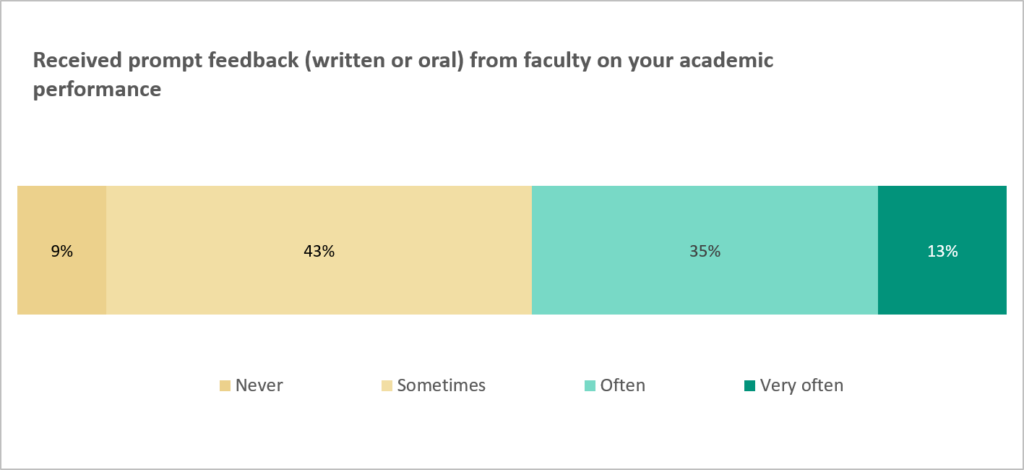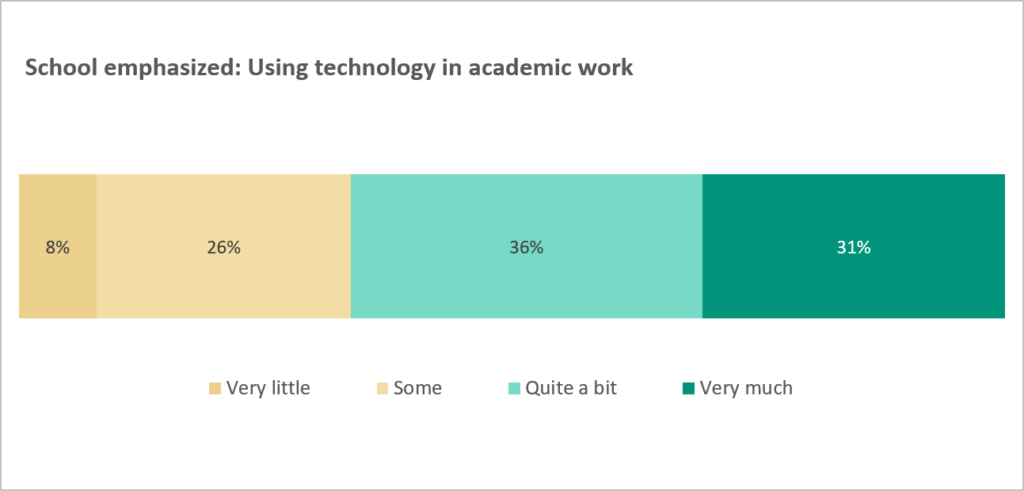Guest Post: Student Response Systems as a Tool for Formative Assessment
Hannah Haksgaard
Associate Professor
University of South Dakota Knudson School of Law
Under American Bar Association Standard 314, law schools—and therefore individual law professors—are required to engage in formative and summative assessment of students. Formative assessment is assessment that occurs during the semester where students receive feedback in order to improve their performance. Although formative assessments do not need to be graded, formative assessments must include feedback that is detailed and on point. Feedback on formative assessments is most valuable if it can be provided promptly. Yet, under half of the LSSSE respondents report receiving prompt feedback from faculty “often” or “very often” on academic performance.

However, this student response may be undercounting formative assessments. Professors give immediate feedback in all sorts of ways that students might not recognize, such as through a Socractic dialogue in class, through brief conversations in hallways, and through feedback on group discussions during class. More formal feedback—such as graded quizzes or written comments on drafts or practice exams—is time-intensive for professors and can be especially burdensome for professors with large-enrollment courses or high service loads.
One way to provide fast feedback on student performance is to use student response systems in the classroom. Traditionally operated through hand-held clickers, student response systems are now internet-based programs that allow professors to pose multiple-choice or true/false questions on the screen and students to answer those questions on their phones or computers. Programs include Kahoot!, Mentimeter, Poll Everywhere, Socrative, Turning, and many others.
Importantly, these programs provide immediate feedback to students. Once all of the students have answered a question, the correct answer is highlighted on the screen. Plus, each student’s own device tells the student whether they were right or wrong on that question. In addition to providing feedback to students about their own individual performance, these programs show what percentage of the class chose each answer. This allows students to recognize how they are performing in comparison to peers and allows professors to modify their teaching based on the responses received.
During the COVID-19 pandemic, law professors and law students have been forced to adopt more technology in teaching and learning. Student response systems are an important way to leverage technology whether for in-person, hyflex, or online teaching. According to the LSSSE, most students feel their schools emphasize using technology in academic work.

Student response systems are a way to emphasize the use of technology in the actual classroom in order to improve student learning and student participation. This is particularly important for Generation Z law students—those born between 1995 and 2010—who already make up a majority of law students, having now replaced millennials as the dominant generation in law school.

Research shows that Generation Z students expect to receive information quickly and have trouble disconnecting from cell phones.[1] Using those cell phones for in-class activities through student response systems can both engage law students and provide them the immediate feedback they seek.
This technology will never replace substantive written feedback or one-on-one meetings to discuss assignments, but student response systems are a way to supplement other assignments and types of feedback. Both students and professors benefit from formative assessment, and student response systems are an easy way to provide the immediate feedback that students need.
__
[1] Tiffany D. Atkins, #ForTheCulture: Generation Z and the Future of Legal Education, 26 Mich. J. Race & L. 115, 135 (2020).

